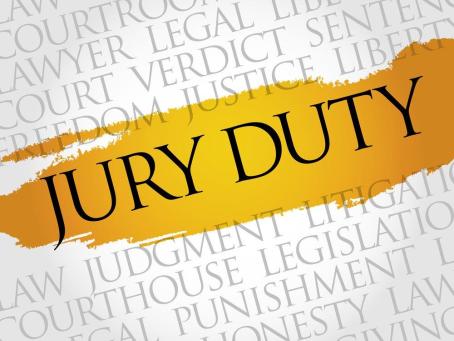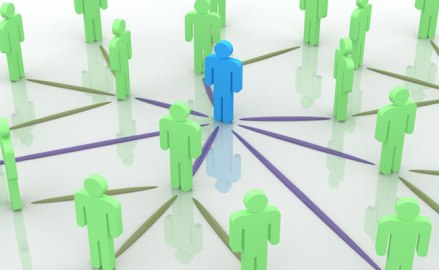This week I am serving the second of my two weeks of jury duty for the Franklin County Municipal Court. I have been told at least ten times that this is the busiest court system in the state of Ohio and one of the busiest in the country. In fact, Franklin Muni is being studied as a beta test for how to handle and schedule jurors to improve one’s experience when the summons arrive. I have been here for seven days and only one case had gone to a jury trial—and I was fortunate to be a part of the selected jury.

The case itself was pretty cut and dry. There was a car accident where one driver was cited and accepted responsibility. Five to seven days after the accident, the plaintiff started feeling sore. He went to the emergency and physicians racking up $7,000 in medical bills that he wanted the defendant to pay for since he caused the accident. But, then it got interesting. The plaintiff has five felonies in his past for crimes involving dishonesty and lying. The defendant’s lawyer argued that the injuries were not incurred from the accident, but were chronic issues suffered before the incident.
As we went into jury deliberations, it was clear, we were a group of networked individuals. Many of the jurors wanted to talk about their own experiences in car accidents or how pain can show up after an injury takes place. Others wanted to make several assumptions on the plaintiff and the defendant based on their own belief system. “This guy seems honest.” “He lives with his mom and goes to church.” “He couldn’t remember the gender of his physician, but that could be a cultural thing.” While we had one purpose, we had differing points of view and experience which we all brought with us. As the magistrate told us later: this is the beauty of juries. Juries have the advantage of bouncing ideas off one another to come to a verdict, a judge only has him/herself.
In many ways, the statement from the magistrate sums up one of the advantages of networked individuals. While each person brings his/her own belief system, experience, training and thoughts to the situations, each one is working together to achieve the common goal. The provides the leader with the opportunity to have a multidisciplinary solution or course of action as described by Rainie (2013). The rise and accessibility of the Internet has made these networks larger and across entire enterprises as connecting with others is easier than ever before.
Organizations with multidisciplinary, cross-functional teams are connected as a wirearchy, not a traditional hierarchy. Wienberger (2011) shared that Wikipedia has embraced a networked approach to its community by developing a set of policies and processes to enable the community to have control of the content. My concern is that this strategy might never achieve the desired results. This approach can lead to more robust discussions and dialogues, but can it also paralyze a company from moving forward? It could lead to analysis paralysis.
There are times when a decision needs to be made and too much time is spent in discussions. A leader is needed to make a decision and stand by the decision. Smith and Anderson (2014) interviewed several executives about the changes that will be impact jobs in the coming years. One respondent (Jonathan Grudin) discussed that technology will continue to disrupt jobs. He continued that jobs will still need to be created. A leader will help ensure that the workforce is prepared for the new tasks which are required.
 The best solution for leading the workforce through these changes is to have a hybrid approach to a fully networked organization. Flexibility in the workplace will be necessary to accommodate the needs of works and adapt to the needs of the workforce as some tasks are automated and new job functions are created. The ten most important skills of 2020 focus on intangible skills such as critical thinking, social intelligence, and cross-cultural thinking. These soft skills are not always taught in the classroom, but instead are taught though the actions of great leaders.
The best solution for leading the workforce through these changes is to have a hybrid approach to a fully networked organization. Flexibility in the workplace will be necessary to accommodate the needs of works and adapt to the needs of the workforce as some tasks are automated and new job functions are created. The ten most important skills of 2020 focus on intangible skills such as critical thinking, social intelligence, and cross-cultural thinking. These soft skills are not always taught in the classroom, but instead are taught though the actions of great leaders.
Oh, and about that jury trial. We found in favor of the plaintiff, but there was one holdout. You’ll never guess who that was.
Krista – another entertaining and insightful post! I hope you’re at least making the most of your time in the waiting room. I was fortunate enough to get a short jury duty assignment that landed over the week of Thanksgiving a few years back – it was only three days and we were let go early most days. Whew!
Your reflection reminds me of the classic film, 12 Angry Men and the questions of leadership that arise in that sweltering deliberation room. Leadership author, Thomas Lee (2009) offers the following observation: “But best of all, 12 Angry Men is a case study in Socratic leadership—in other words, leadership by means of asking provocative, probing questions that compel people to rethink their assumptions and beliefs.” He goes on to describe the ways in which Henry Fonda’s Juror no. 8 uses many of the top skills for 2020 that we’ve been reviewing. In his “inquiry-led dialogue” (Lee, 2009), Fonda challenges the assumptions, beliefs, and biases of the other jurors. Because he is not asserting unequivocal dominant ideology, he forces the other jurors to be more critical in their own decision-making processes, and ultimately winds up changing thinking and behavior.
Of course, such leadership requires extraordinary stamina, curiosity, and generosity of spirit. I think that this is one of the reasons that positional, titled leadership works so well. It’s quick and easy. It’s also why expert, referential, and servant leadership is so difficult for leaders – especially those in the United States – to adopt. If you’re operating in a networked workforce, you must develop this kind of stamina and curiosity. You can’t just say “because I’m the boss.”
The paralysis effect, I think, comes from individuals in groups that are stubbornly persistent rather than generatively or creatively persistent. It’s far easier to keep saying no than it is to adjust viewpoints and look for compromise, unique approaches, and ego-free results.
Oh, and if you haven’t watched 12 Angry Men recently, I highly recommend it! It’s only 96 minutes 😉
—
Reference:
Lee, T., (2009). What we can learn from “12 Angry Men.” Minding Gaps [website]. Retrieved from http://rainbows.typepad.com/blog/2009/08/leadership-lessons-from-henry-fonda-movies.html
LikeLiked by 1 person
James:
As soon as I received my summons, I thought about the movie 12 Angry Men, but I was in Municipal Court, so it was kind of like “8 Networked Individuals”. And, I’m not sure that leadership prevailed, but instead he with the loudest voice. As the foreperson, I did try to ensure that there was a dialogue and that every person was able to voice his/her own interpretation of the evidence provided. Thank you for your comments-Krista
LikeLiked by 1 person
Nice post (and neat comment by James). You raise an interesting issue…how to be open and decisive at the same time. For me, the answer comes down to trust. Good leaders empower their people but also build credibility with them so that when decisions must be made, people accept the direction of the leader.
I was lucky in my Navy career to serve with Bruce Young. I reported to the USS JONAS INGRAM (DD938) as Operations Officer the same week CDR Young reported as the new Commanding Officer. The previous CO left a ship very demoralized. None of the junior officers had been allowed to con the ship…and thus had no experience. About a week later, out at sea, I got a call asking me to see the Captain in his stateroom. When I entered, I could see that he was agitated. He noted that he could feel the ship moving…but he did not want to go up on the bridge and scare the young officer in charge. So he asked me to wander up and just spend a few minutes making sure everything was okay. It was a lesson I never forgot in both his trust in me and his understanding that he needed his people to feel that he trusted them.
LikeLike
Dr. Watwood:
What a great story. I noticed over the past two weeks as I was out on jury duty that my team members would ask for my approval on some of the most mundane items. While trust in extremely importance between leaders and followers, sometimes it is also our job to give others the confidence to make decisions and have them understand that we will stand by those decisions.
When I returned to the office this morning, I was sure to thank my team for keeping projects on schedule.
-Krista
LikeLike
What a great approach – you surely know how to tell an engaging story and make your points. You express a concern that the networked approach could also lead to analysis paralysis. I can see this happening as well, but in a divergent sense with the search for understanding spinning and pinging wildly in every direction – in a sense reversing the previous method of coming to consensus. In the past aw Weinberger illustrated – people with information brought that information together (as you did with the jury). Then that information was culled and assessed against standards and a conclusion was drawn (which you also did in the trial). However, it seems to be more and more common for the disparate opinions to come together but without clear goals, unified purpose and no strong desire to find one (think political climate). This got me thinking about consensus and its value but after reading this brief piece from Forbes http://www.forbes.com/sites/markmurphy/2014/12/05/when-trying-to-reach-consensus-can-make-people-angry/#118f803c16d6 I decided that the value I place on consensus may be overrated. So I perused through http://web.mit.edu/publicdisputes/practice/cbh_ch1.html and realize the comfort I may have found in agreement or seeking the best answer for a situation is likely something I need to reconsider and reframe. As you say in your post – the leader needs to ensure everyone is prepared. Thus I’d better prepare myself. Thanks ~ Tricia
LikeLike
Tricia:
Thank you for sharing the Forbes article. I found it very helpful with a current issue I have at work. A few months ago our Board approached a three-year strategic plan–which is great. My concerns about consensus are that each person in the organization has equal access to the plan to provide updated to it as they see fit. It has caused some issues with how to properly update the plan and track out progress. While I agree that everyone should feel some ownership in achieving the goals of the plan, it still seems like there needs to be an overall driver for it. After doing a quick Google search (thank goodness for the connected world), I found a number of software solutions for tracking the progress of one’s strategic plan. I think this will provide the foundation for an interesting conversation on Monday about access and ownership of the tracking document. Thank you-Krista
LikeLike
Happy it led you down new paths and to a solution which should help your team feel more ownership. The ongoing access seems very aligned conceptually with everything we have been reading as well. Best to you for a great day Monday! ~Tricia
LikeLike